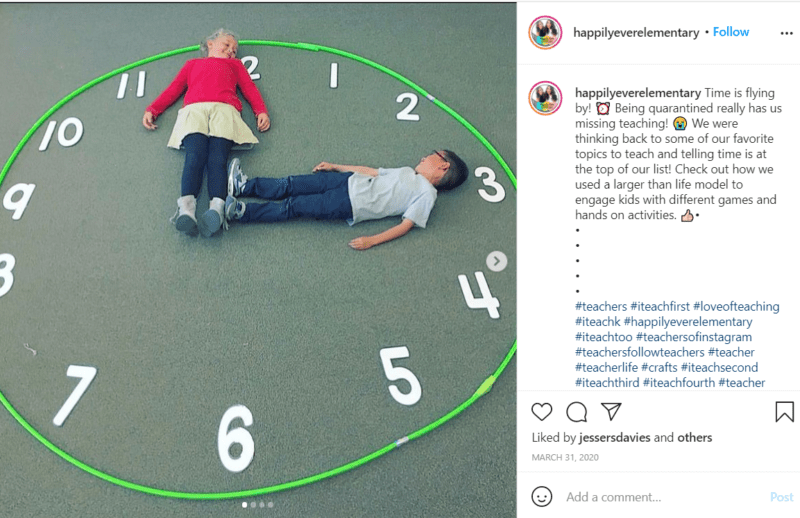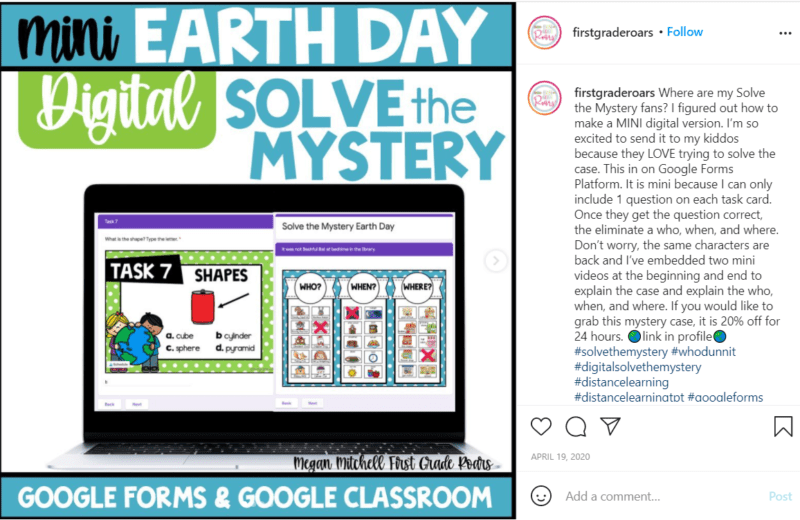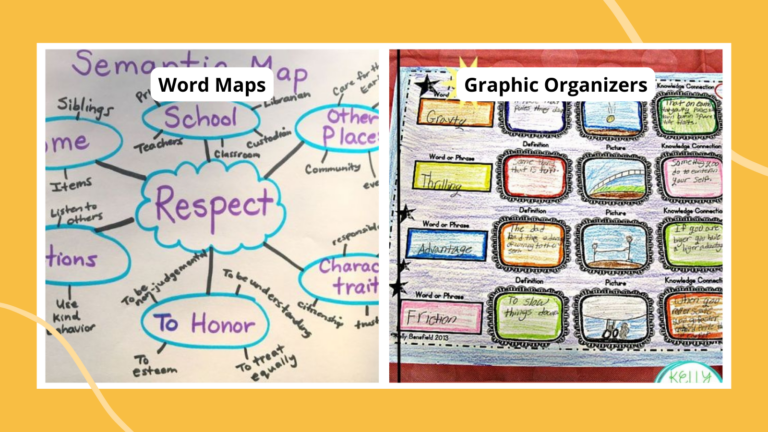Which students understanding the material and which ones need more support? Effective teachers actively monitor their students’ understanding and then differentiate so every student can succeed. It’s more than just testing their knowledge. Teachers need to ultimately adapt their teaching to suit students’ needs. That’s why these first grade formative assessment ideas are so important. Teaching remote? Don’t worry, we’ve got ideas for remote learning assessments too!
Move It!
Gauge student learning while also giving your first graders a chance to move and wiggle.
1. True/False
Designate one corner of the room as the “True” zone and another as the “False” zone. Next, read a true-or-false question related to a recent lesson and ask students to move to the zone representing their answer. Once students have chosen a corner, ask them to pair up and share their thinking with a partner. Listen in on each group and include student’s comments in your class discussion of the correct answer to the question.
Not only does a game of True/False get students up and moving, but the speed at which students move toward the correct answer can tell you a lot about how confident they are in their answers. Likewise, students who seem to be tagging along with other students likely to need additional support in mastering the concept. If it seems like too many students are following others, have each student write down their answer before moving to the corner corresponding to their answer.
2. Act It Out
Inviting students to show what they know through full-body movements not only gives them a chance to wiggle but can also help deepen their understanding of a topic. Across the curriculum, look for ways to have students act out what they’ve learned. Some possibilities include creating short skits to summarize a concept, or becoming the “counters” in a math problem, or representing the hands of a clock, like teachers Stephanie and Loreal did with their first graders!

Source: @happilyeverelementary
[contextly_auto_sidebar]
Show It!
Gestures or visuals allow you to get a quick read on student understanding. They make the perfect first grade assessment strategies for your toolbox.
3. Traffic Lights
Colored plastic cups from a party store find new purpose when they become “traffic lights” for your first graders. Give each student a set of three cups: one red, one yellow, and one green. Explain the meaning of each color cup (listed below). As you teach a lesson, stop periodically to check in with students. Ask them to stack the cups so only the cup that reflects how they feel about their learning is showing. Remind students that it’s okay to show a red, yellow, or green light. Everyone learns at their own pace! Traffic light cups can also be used during independent work time as a way for students to let their teacher know they need help. An anchor chart helps students remember what each color means.
- Red Light = “Stop, I need help.”
- Green Light = “Keep going, I understand.”
- Yellow Light = “Slow down, I’m a little confused.”
4. Sign It with ASL
Teach your first graders how to sign the letters A, B, and C. Read a question aloud and give three possible answers, one for each letter. Ask students to wait to hear all responses. Now have students make the alphabet letter sign corresponding to the answer they chose. Instruct them to keep their letter sign in their lap until you call out “Eyes closed, letters up!” Once you’ve gauged the student responses, call out “Letters down and eyes on me!”
Mark It!
These assessment ideas make use of written/drawn responses, making them perfect for quiet times in the classroom.
5. Scoot
Like quizzes, but without the stress, adding a Scoot session to your regular line up is a quick way to track student progress. Many first grade Scoot game templates exist online or you can create your own. Basic Scoot game instructions:
- Prepare your question cards and place them around the room to create stations. Aim for 5-10 question stations depending on how much space and time you can allocate to the game.
- Decide how much time you will give students to answer each question. This could be 30 seconds to two minutes depending on the question difficulty and the length of response you expect. Once the game begins, if it looks like students need more time, adjust accordingly. Scoot works best when students have the feeling of “racing the clock” but aren’t frustrated by not having enough time to finish their work.
- Give each student a Scoot sheet with spaces for them to write their answer to the question they find at each station. The questions and the spaces should be numbered so students can easily match them up. Explain that students will work through the question stations in order, but that might not mean starting with question number one. For example, if they begin at station five, they will go to station six when it’s time to change stations.
- To begin the game, have students start at the station nearest to them. Signal the start of the game with a bell, whistle, smartphone chime, or “ready, set, go!”
- Start your timer. When time is up, use a sound to signal that it’s time to move to the next station. Repeat this process until all students have visited every station.
Scoot Variation: Instead of having students write their responses on response sheets they take from station to station, give each student a unique marker color or pencil color, and have them contribute a response at each station. For example, students could add a word using a certain letter or sound at each station, or add a number that is greater than/less than the number at each station. Using different colored markers or pencils makes it easier to tell if all students have contributed an answer and who might need additional support.

Source: @primaryfairytales
6. Whiteboards
Give each student a small whiteboard and a marker. Ask students to draw or write their answers and then hold up their whiteboard. Scanning the room, it’s easy to see if students understand the material and which students need extra support.
7. Check-In Bulletin Board
Formative assessments become even easier when they become part of the fabric of the classroom space and routine. This is why Check-In Boards are worth their weight in wall space. At their simplest, Check-In Boards feature a space for each student to add a sticky note or exit ticket sharing something they learned from the lesson. Creating a dedicated space for student feedback makes it easy to see who has contributed and to gauge overall understanding.

Source: @primaryfairytales bulletin board
Voice It!
Channel your students’ love of talking with these oral assessment ideas.
8. Pair and Share
Simple but effective! As students talk, move around the room to listen in on their conversations. Pair and shares can be used in a variety of ways including:
- Taking turns being the “teacher” who explains the main points of the lesson
- Asking a partner to share how they feel about their level of understanding and what questions they still have about the topic
- Discussing a question posed by the teacher
- Applying what they’ve learned to a new situation
9. Me TV
Using a large piece of cardboard and a utility knife, create a TV frame cut out. Make several additional TV frames so each small group can have their own frame. Write a selection of review questions on the board. Divide the class into small groups and invite students to take turns presenting their own 2-minute “TV show” in response to one of the review questions.
First Grade Assessment Ideas for Online Learning
Take advantage of these simple video call assessment ideas and helpful online tools to gauge student learning while teaching remotely.
10. Thumb-o-Meter
Before continuing on with a lesson, ask students to show a thumbs up, thumbs down or sideways thumb to show how they feel about their level of understanding:
- Thumbs up = “I get it!” or “I can do it!”
- Thumbs down = “I don’t get it!” or “I need help!”
- Thumb to the side = “I kind of get it.” or “I could use some more practice.”
11. Kahoot
Assessments that feel like games are a stress-free way to learn more about what your students know. Using Kahoot as an assessment tool can be as simple as setting up a quick game of 10 questions for students to complete independently. As a class, Kahoot can be used to create a game show styled event. Students can respond via the chat window of their video conference platform or by writing their answer on paper and then holding it in front of the camera.
12. Google Forms
Google Forms are an indispensable tool for teaching online. They allow you to quickly create a survey with lots of different kinds of questions including multiple choice, short answer, long answer, checkboxes, and more. Use them for single question polls to take the pulse of the classroom, daily check-ins, exit tickets, or quizzes that grade themselves. Some teachers are even taking Google Forms to a whole new level by making them into a mystery game!

Source: @firstgraderoars
For even more great resources for teaching first grade online, check out: Your Guide to Teaching First Grade Online and Tips and Tools for Making Online Assessments Work.
What are your favorite first grade assessment ideas? Please share in the comments or on our WeAreTeachers HELPLINE!


